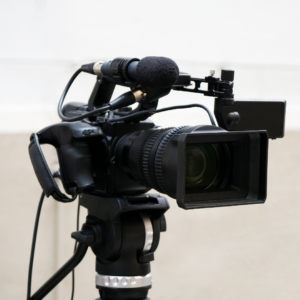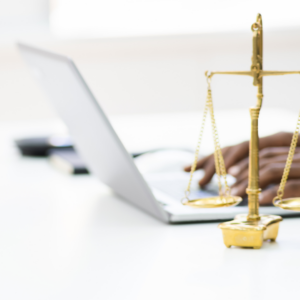Some Pros and Cons of Video Depositions
It is not quite standard practice, but video depositions are becoming increasingly common even if the lawyers involved do not expect to use the video at trial. Of course, there are times when a video deposition is needed, such as when a witness is infirm, might be close to death, is overseas, or will be unavailable for live testimony at trial. These circumstances will, by rule, be designated as evidence depositions and will be taken pursuant to those rules.
Other than evidence depositions, when considering Noticing a discovery deposition via video, there are some advantages and disadvantages to consider. Note that cost is not too much of a factor since having a deposition videotaped does not increase the cost substantially. Further, a written transcript is almost always needed, so a video discovery deposition does not necessarily save the costs of transcription.
The disadvantages involve a number of issues. First, setup and arrangement can be more complicated. This involves questions of an appropriate visual setting. These include an appropriate chair and proper background for the witness, correct and effective lighting, placement of counsel, framing, and other visual factors. Second, witness preparation can require extra resources for the attorneys presenting the witness. In effect, the preparation is more akin to preparing a witness for trial. This includes requiring the deponent to wear formal clothing, accessories, hair, and makeup with an “eye” toward how the video would appear to a judge or jury. Preparing the witness with respect to body language and other visual clues is also important.
Third, the same preparation is needed for the lawyers who will be present in the video (or, alternatively, it should be agreed that only the witness will appear on camera). Fourth, lawyer preparation is needed to enhance question “flow.” In a non-video deposition, if a lawyer takes 10 seconds to think of the proper follow-up question, that 10 seconds does not appear in the written transcript. In a video deposition, however, that time gap can be jarring and would potentially require some editing if the video were presented to a jury.
Those disadvantages being listed, there are a great number of advantages to video depositions. These include:
- Taking the visual “measure” of a witness — lawyers know that some witnesses present better than others in a courtroom; issues like posture, mannerisms, visual clues of truthfulness, etc.; video depositions can capture those visual measures;
- Visual measures are available for lawyers new to the case — it is not uncommon for one set of lawyers to “work up” a case and, later, for a set of trial lawyers to take over; video depositions allow new lawyers of the case to make their own assessments of the witnesses; further, that measure is preserved even if the trial occurs years later;
- If used at trial, a video deposition is more useful to a jury than having a written deposition read to them (and more interesting) — the jury can see the visual clues that help their judgment with respect to credibility;
- Video tends to help keep witnesses and counsel well-behaved during the deposition — lawyers tend to fight less on camera;
- Conversely, the video shows “bad” behavior in a deposition — such as anger and bullying tones — in a way that cannot be shown on paper;
- Video depositions tend to be quicker — this is partly because the lawyers involved tend to be more prepared and tend to do less “fishing”.
Contact Elizabeth Gallo Court Reporting Today
For more information, call the experienced court reporters at Elizabeth Gallo Court Reporting. We follow the best practices in order to provide excellent litigation support to our customers. Contact us today to learn about our services and how we can help you.







